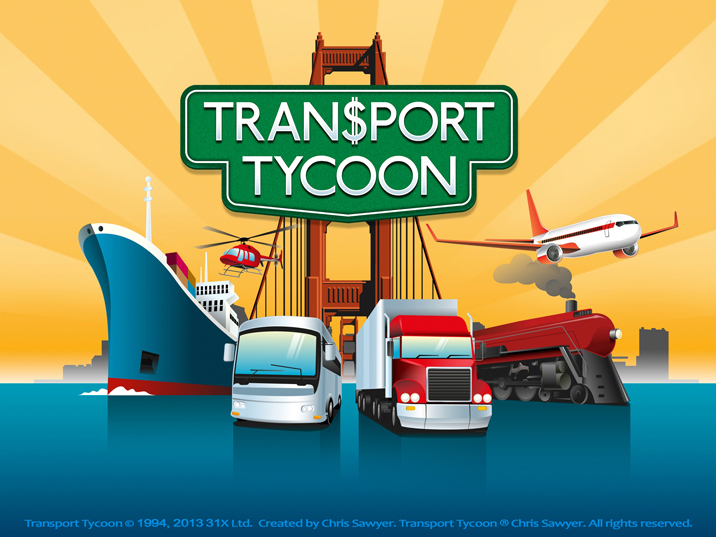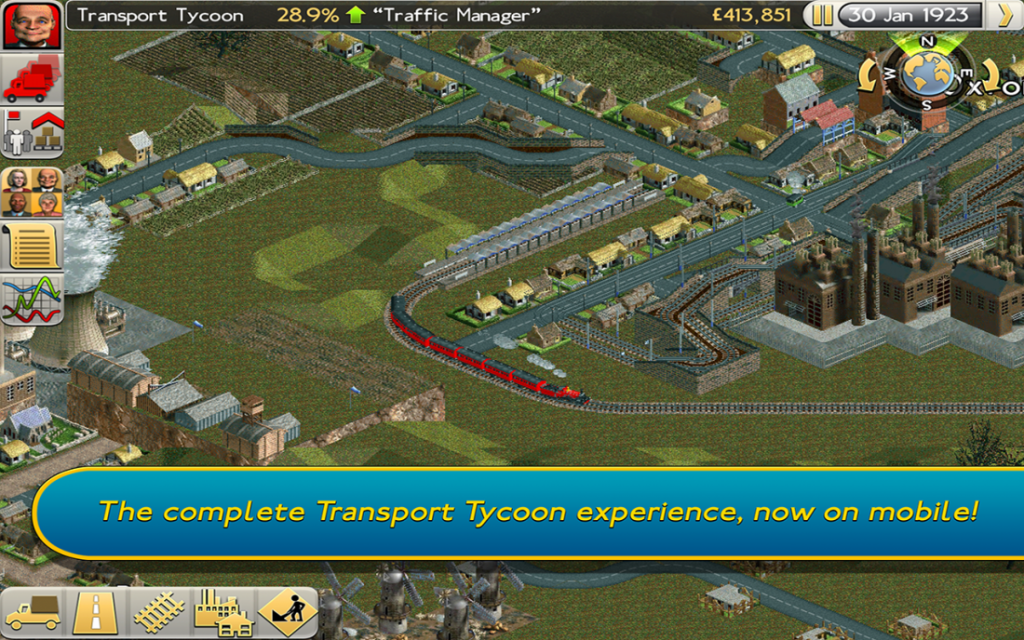
Transport Tycoon needs no introduction, but it is still worth talking about. As popular as this title is, many people have managed to miss it. In fact, that’s probably not so surprising.
A game about transporting people and goods is not the easiest sell. Nevertheless, if you take the time to dig in, there’s plenty of content here that’s sure to hook you for a very long time. But while the interface is now fully touch-based, that doesn’t make it any easier to immerse yourself in this game.
Transport Tycoon was first released in 1994 and gained critical and commercial acclaim. Its creator, Chris Sawyer, developed one sequel a few years later before handing over the reins to future releases. This port of the original Android game was designed and directed by Sawyer himself.
His company and development partner Origin8 recreated the game using code from the original version, and focused on revising the controls for touchscreen devices. The rest of the game remains largely untouched, and unfortunately this is noticeable. The materials provided to explain the game to new players frankly fail to do their job.
The reference guide is literally an information dump that serves more as a reference guide than any sort of tutorial. One could teach a college course using the content available internally. It wouldn’t be so bad if the interface didn’t look, well, like something out of the 90s. It would be easier for players to just toss them on the online wiki than to expect them to glean information from this mixture of colours and UI elements.

Apparently, the implementation of touch controls took most of the development team’s energy, and their efforts were not wasted. Touch is responsive, and were it not for the outdated graphics (which are clearly not retro-fake), I’d have no problem believing that this game was originally designed for Android. You can drag the map with a tap of your finger, use zoom to zoom in and rotate with two fingers to rotate the map.
In fact, this last gesture offers a less than pleasant experience. The map rotates instantly, and while this might not be so unpleasant when you tap the turn arrows next to the compass in the upper right-hand corner, it’s disorienting when you rely on the gesture instead. Nevertheless, this does little to detract from the fact that the artwork is well done.
The game looks old, except for a few moments. The graphics haven’t changed since the original release of the game product. But as it turns out, the new interface looks completely different. In doing so, it has simply been given a pixelated look that helps it fit in with the rest of the game.
The high-resolution splash screen, which opens with the game for the first time, gives the impression that a more modern experience awaits the player. The title screen actually does a good job of creating a modern, retro-style interface, but as soon as you click on any menu item, the feeling of brilliance fades away.
The text is sloppy, causing the UI to look like it was molded like a school project in a hurry. This new font is maintained throughout the game. This is one aspect of the look and feel that would have been better left untouched.